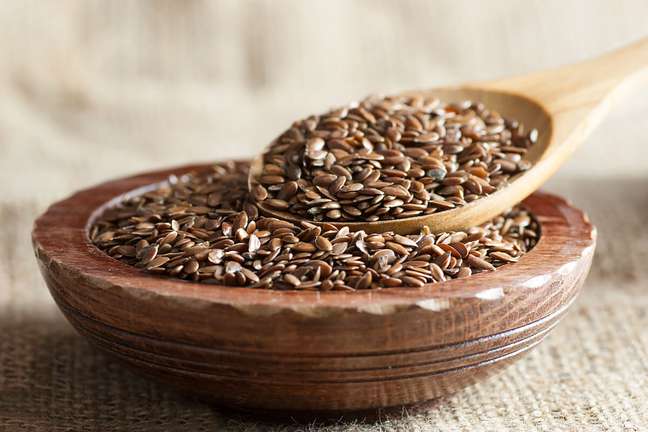The seed contributes to the proper functioning of the body and helps fight disease
Flaxseed is a seed that has high levels of fiber, vitamins, minerals, protein, and magnesium. Therefore, it helps regulate the body’s absorption of other nutrients. According to nutritionist Queila Turchetto, it has components that have important pharmacological actions. “In recent research, she has presented clinical results in studies related to diabetes, lupus, bone loss, liver, kidney and cardiovascular diseases, with favorable results regarding the beneficial effect of the seed,” she explains.

Benefits of seed in disease prevention
According to nutritionist Jamilla Saygli, the flax seeds it also contributes to healthier skin and helps regulate bowel movements. “It helps in the reduction of inflammatory processes and prevents dyslipidemia and cardiovascular diseases”, adds Adriana Cerchiari de Andrade, nutritionist.
All of these benefits are related to the fact that flaxseeds are a rich source of alpha-linolenic acid, fiber and lignans. Furthermore, the seed is gluten-free and contains fatty acids, omega 3 and 6 and carbohydrates as nutrients.

Tips for eating flaxseed
Next, nutritionists Queila Turchetto and Jamilla Saygli list some tips for including flaxseed in your routine and take advantage of its advantages.
- At breakfast it is recommended to consume it naturally;
- It can accompany fruit, juices, vitamins and yogurt;
- At lunch it can be served in a salad, even with the natural seed;
- One option is to process and use the bran in whole grain bread recipes;
- At dinner you can be present at pottage;
- When we buy the processed seed, part of its properties are lost. The ideal is to process only when you are going to use it;
- It is recommended, by default, that consumption does not exceed 10g per day. In the event of nutritional deficiencies, this recommendation may change;
- It can be eaten with salad, rice and tapioca;
- To maintain the nutritional properties, the best form of consumption is in the form of a gel;
- To make the gel, put 1 tablespoon of chia in 50ml of water and let it hydrate for 15 minutes. Afterwards, just add the hydrated seed full of nutrients active in juices and vitamins;
- Toast the seeds in a pan. When it begins to “pop,” the seed is ready for consumption.
nutritional composition
As explained by Queila Turchetto, flax seeds have, in their chemical composition, approximately from 30 to 40% of lipids, from 20 to 25% of proteins, from 20 to 28% of total dietary fibers, from 4 to 8% of moisture and 3 to 4% ash, plus vitamins A, B, D and E and minerals such as potassiumphosphorus, magnesium, calcium and sulphur.
+The best content in your email for free. Choose your favorite Terra newsletter. Click here!
Source: Terra
Ben Stock is a lifestyle journalist and author at Gossipify. He writes about topics such as health, wellness, travel, food and home decor. He provides practical advice and inspiration to improve well-being, keeps readers up to date with latest lifestyle news and trends, known for his engaging writing style, in-depth analysis and unique perspectives.







